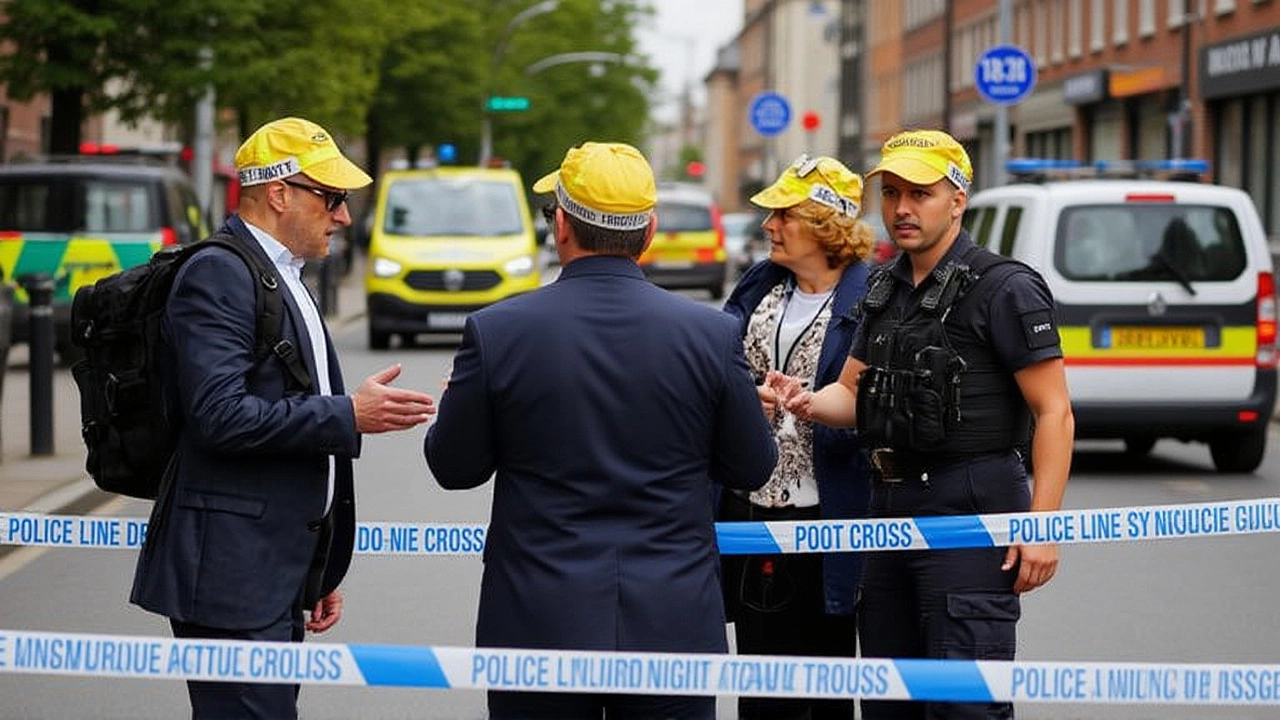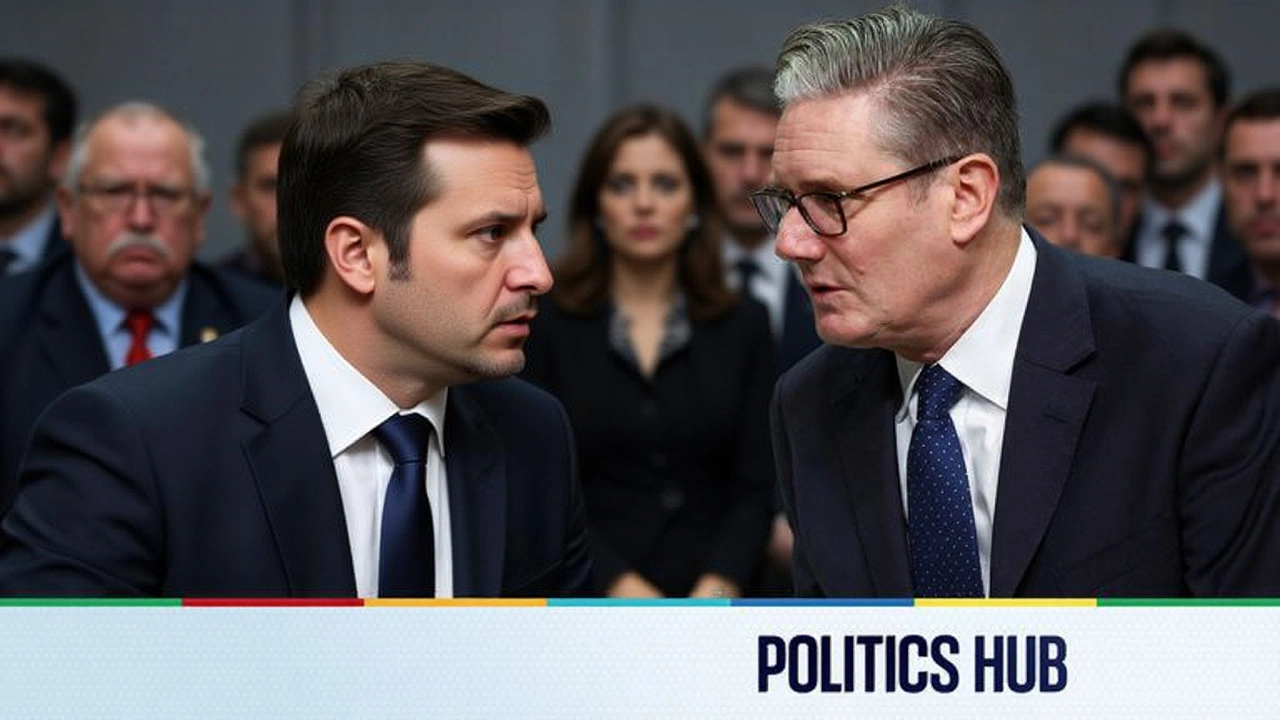When Keir Starmer, Prime Minister of the United Kingdom addressed leaders at the European Political Community summitCopenhagen, he warned that NATO nations must keep up the pressure on Vladimir Putin, President of Russia if Europe hopes to end a war that has already lasted nearly four years. The Prime Minister’s remarks came as Ukrainian President Volodymyr Zelenskyy and French President Emmanuel Macron prepared to unveil a fresh €40 billion military package for Kyiv.
Background to the European Political Community Summit
The European Political Community (EPC) was launched in 2022 by Emmanuel Macron as a less formal forum for European heads of state – both inside and outside the EU – to coordinate on security, energy and migration. This year’s gathering, held in Copenhagen, centered on the war in Ukraine, the resilience of European supply chains, and the future of collective defence under NATO.
Starmer's Call for Continued Pressure on Russia
Starmer told the assembled leaders that the fight against Russian aggression “is far from over”. He warned that Putin’s “appetite” extended beyond Ukraine, seeking to “interfere across Europe in many different ways”. The British Prime Minister emphasized two pillars of pressure: sustained economic sanctions and bolstering Ukraine’s defence capabilities.
- Sanctions targeting Russia’s energy exports and the shadow fleet.
- Increased funding for Ukraine’s integrated air‑defence and drone‑interceptor programmes.
- Coordinated NATO exercises to deter any spill‑over attacks.
Starmer stressed that “the economic pressure is having an effect, and we need to continue that pressure through further sanctions, bearing down on energy in particular, and on the shadow fleet.” He urged NATO members to act “with everything that we have” to blunt Russia’s war‑making capacity.
Coalition of the Willing Commits to €40 Billion in Aid
Parallel to the EPC talks, a meeting dubbed the “Coalition of the Willing” – involving the United Kingdom, France and Ukraine – announced a pledge of at least €40 billion in military support for Kyiv in 2025. The figure mirrors NATO’s 2024 commitment and is earmarked for high‑tech air‑defence systems, long‑range artillery, and the production of drone‑interceptors.
“We are matching the alliance’s promise and expanding it where it matters most – in the skies over Ukraine,” said Keir Starmer during a press briefing.
Putin's Countermessages and the Russian Perspective
On the same day, Vladimir Putin addressed the Valdai Discussion Club, dismissing the notion that Russia would strike a NATO member. He declared that any foreign troops on Ukrainian soil “are legitimate targets for destruction” and called for “peace guarantees” that protect both Russia and Ukraine.
Putin reiterated Moscow’s rejection of NATO membership for Kyiv while signaling a begrudging acceptance of Ukraine’s desire to join the European Union, calling EU accession “a legitimate choice”. He also praised the United States under Donald Trump for “point‑blank statements without being hypocritical”.
Implications for European Security and Future Sanctions
The divergent messages from London, Paris and Washington underscore a complex diplomatic dance. While the EU and NATO push for deeper sanctions on Russia’s energy sector, the United States is weighing a new “reassurance force” – a rapid deployment brigade to protect Ukraine’s borders, but only if backed by sufficient European funding.
Analysts warn that without a unified front, Russia could exploit the gaps. Simon Miller, senior fellow at the European Council on Foreign Relations, notes: “The real test for NATO now is whether it can translate rhetoric into coordinated, binding actions that choke off the shadow fleet and keep the pressure on energy markets.”
What Comes Next? – Timeline of Expected Moves
- Oct 5‑7, 2024: NATO foreign ministers convene in Brussels to assess additional sanction packages.
- Nov 2024: European Parliament votes on funding for the proposed reassurance force.
- Dec 2024: First tranche of the €40 billion coalition aid is transferred to Ukraine.
- Early 2025: Deployment of advanced air‑defence batteries along Ukraine’s western front.
All eyes remain on the upcoming NATO summit in Washington, where the alliance is expected to codify the next phase of economic pressure and military assistance.

Frequently Asked Questions
How will the €40 billion aid package affect Ukraine's defence?
The funds will mainly fund next‑generation air‑defence systems and drone‑interceptors, closing the gap that Russian missiles and swarm drones have created. Experts expect at least three new Patriot‑style batteries to be operational by mid‑2025, increasing Kyiv’s ability to protect key cities.
What new sanctions are being considered against Russia?
NATO ministers are eyeing tighter restrictions on Russia’s offshore oil platforms, a ban on the “shadow fleet” that transports oil via clandestine routes, and penalties for third‑country firms that facilitate equipment transfers to Moscow’s military.
Why is a "reassurance force" being discussed?
The idea is to station a rapid‑reaction brigade of NATO troops near Ukraine’s border to deter any accidental escalation into a NATO‑Russia clash. The force would be multinational, funded largely by European nations, and would operate under a UN mandate.
How does Putin view NATO’s involvement?
Putin repeatedly says NATO expansion is a “direct threat” to Russian security and claims it fuels the conflict. Yet he signalled openness to Ukraine joining the EU, suggesting a partial concession if the NATO question is set aside.
What role does the United States expect to play?
President Donald Trump has signalled upcoming talks with Putin and indicated support for any U.S.-led peace initiative, while also urging European allies to back the proposed reassurance force and maintain strong sanctions.

